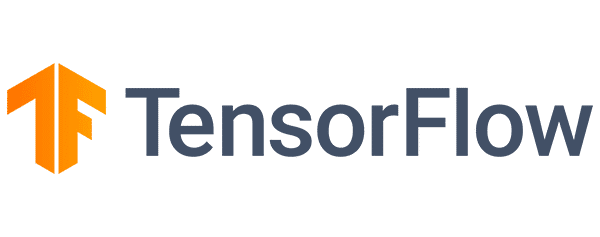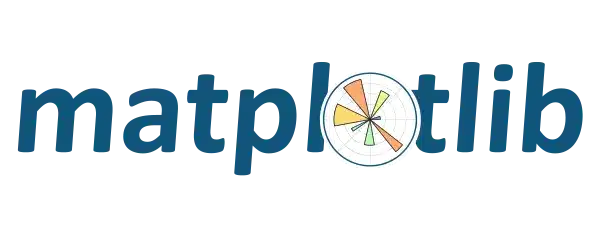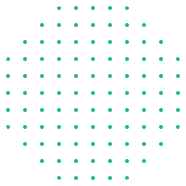World
Class Instructor
1:1 with
Industry Expert
400+
Global Hiring
55%
Avg. Salary Hike
- Overview
- Course Details
- Syllabus
- FAQ
Acquire Key Data Analysis Skills: Master Data Analytics, Earn Certification, Launch Your Data Career!
The Elysium Certified Data Analyst Training Course offers comprehensive instruction in R, Tableau, and Power BI, To build expertise in data analysis and visualization. Additionally, students can enhance their programming skills with a Core & Advanced Python Programmer Course, Upon completion of these courses, students gain industry-relevant knowledge and tools to excel in the field of data analytics. Elysium provides 100% placement assurance, ensuring opportunities in top organizations. This program is designed to equip learners with the skills required for high-demand roles.
2.2
Version
180 Hrs
Duration
50 Hrs
Theory
130 Hrs
Practical
Version
2.2
Duration
65 Hours
Theory
12 Hours
Practical
65 Hours
- Real-World Data Analysis Projects
- Personalized coordinator.
- Trainer feedback.
- Trainer availability post sessions.
- Get your staff certified.
- Certificate from governing bodies.
- Recognized worldwide
- Hands on assignment
- Master data analysis fundamentals, including data manipulation, visualization, and reporting.
- Dive into advanced concepts such as predictive modeling and statistical analysis.
- Learn to use powerful tools like SQL, Excel, Tableau, and Power BI.
- Gain expertise in data visualization techniques to communicate insights effectively.
- Understand and apply data governance and compliance policies.
- Develop practical skills through hands-on labs and real-world projects.
Top companies offer this course to their employees
Course was selected for our collection of top-rated courses trusted by businesses worldwide.





Salary
PER ANNUM
₹ 8 L
Job Growth
Current Month
25%
Offer Jobs
2026
8,000
The Elysium Certified Data Analyst – Training Course offers learners the opportunity to master essential data analysis skills using industry-standard tools. Dive into the fascinating world of data analytics and learn SQL, Excel, Tableau, and Power BI with the guidance of experienced instructors. Learners will emerge prepared to tackle real-world data analysis challenges. Here are some of the skills you will need to learn if you want to become a data analyst.
The Data Analyst course teaches you to master the concepts of data analysis. Through this training, you will learn Data Manipulation, Data Visualization, Statistical Analysis, SQL, Excel, and Business Intelligence Tools.
- Data Analysis is the infrastructure that enables the extraction of insights from data.
- Data Analysis is the comprehensive study of data collected by various organizations.
- Data Cleaning is where data will be cleansed and duplicates removed.
- Data Analysts understand data and derive meaningful insights.
- Data Analysis is the foundation on which data-driven decision-making and business intelligence are built.

Our Training Program Benefits
- Live, interactive training by experts.
- Curriculum that focuses on the learner.
- Challenge-based, hands-on project.
- Opportunities for team building.
- Cost- saving training.
- Convenient for your employees.
- Completely tailor-made curriculum.
Chapter-1 R Introduction
- Introduction to R Studio
- R Installation
- R Advantages and Disadvantages
- R Hadoop Integration
- R Packages
- List of R Packages
- Basic Syntax
- Comments
- Data Types
- Data Structures
- Variables
- Keywords
- Operators
- Input/Output
- R Variables
- Scope of Variables
- Dynamic Scoping
- Lexical Scoping
Chapter-2 Control Statements
- R If Statement
- If-else Statement
- else if Statement
- R Switch Statement
- R Next Statement
- R Break Statement
- R For Loop
- R Repeat Loop
- R While Loop
- Create Functions
- Function Arguments
- Types of Functions
- Recursive Function
- Conversion Functions
- Local and Global Variables
Chapter-3 Data Structures
- Strings
- Lists
- Arrays
- Matrix
- Data Frame
- Classes
- Objects
- Encapsulation
- Polymorphism
- Inheritance
- Abstraction
- Looping Over Objects
- S3 Class
- Explicit
- R Debugging
- Error Handling
- Reading Files
- Writing Files
- Working with Binary Files
- R CSV File
- R Excel File
- R Binary File
- R JSON File
- R XML File
- R Database
- R Data Visualization
- R Pie Charts
- R Boxplot
- R Histogram
- R Line Graphs
- R Scatterplots
Chapter-4 Manipulating Data
- Selecting Rows/Observations
- Selecting Columns/Fields
- Merging Data
- Relabeling the Column Names
- Converting Variable Types
- Data Sorting
- Data Aggregation
- Linear Regression
- Multiple Regression
- Logistic Regression
- Poisson Regression
- Normal Distribution
- Binomial Distribution
- Classification in R
- Time Series Analysis
- Random Forest in R
- T-Test in R Chi-Square Test
Chapter-5 Introduction to Tableau
- What is Tableau
- Architecture of Tableau
- Features of Tableau
- Installation of Tableau Desktop/Public
- Navigation
- Design Flow
- File System
- Data Types
- Data Source Connection
- Import Excel File
- Data Cleaning
- Joining Databases
- Data Blending
- Splitting Text to Columns
- Displaying Data in Worksheet
- Adding, Renaming, and Duplicating Fields
- Pivot Table and Heat Map
- Highlight Table
- Bar Chart
- Line Chart
- Area Chart
- Pie Chart
- Scatter Plot
- Word Cloud
- Tree Map
- Blended Axis
- Dual Axis
Chapter-6 Advance Data Visualization/Graph
- Bar Chart
- Stacked Bar Chart
- Bar in Bar Chart
- Combo Chart
- Line Chart
- Single Axis
- Dual Axis
- Blended Axis
- Dual Axis Chart
- Line
- Bar
- Lollipop Chart
- Donut
- Bullet Graph
- Histogram Chart
- Animated Graph
Chapter-7 Building View Advance Map Option
- Explain Latitude and Longitude
- Default Location/Edit Locations
- Symbol Map & Filled Map
- Map Layer
- Image in Map
- Map Option
- Connecting to Different Data Sources
- Excel
- CSV
- SQL Server
- Live vs Extract Connection
- Creating Extract
- Refreshing Extract
- Increment Extract
- Refreshing Live
- Data Source Editor
- Pivoting and Splitting
- Data Interpreter: Clean Dirty Data
- TWB vs TWBX
- How to Create a Packaged Workbook
- Difference Between .tde and .hyper File
Chapter-8 Advanced Data Preparation
- Joins
- Inner Join
- Left
- Right
- Outer
- Complex Joins
- Referential Integrity
- Union
- Data Blending and When Required
- Cross-Database Join
- Why Visualization Comes into the Picture?
- Importance of Visualizing Data
- Poor Visualization vs Perfect Visualization
- Principles of Visualization
- Goal of Data Visualization
- Filter
- Types of Filters
- Quick Filter
- Global Filter
- Normal Filter
- Relevant Filter
- Dimension Filter
- Measure Filter
- Condition-Based Filter
- Advanced Filter Using Wildcards
- Right-Click Filtering
- Top N / Bottom N Filter
- Filtering Order of Operation
- Extract Filter
- Data Source Filter
- Context Filter
- Action Filters
- Filter
- Highlight
- Go to URL
- Go to Sheet
- Set Action
- Parameter Action
- Action Jumps
- Viz in Tooltips
Chapter-9 Basic Calculation
- Sorting
- Calculation - String, Basic, Dote and Logic
- Continuous and Discrete data
- Workinq with Dotes
- Creating calculated Fields
- Logical Functions
- Case If Function
- ZN Function
- Else If Function
- Ad-Hoc Functions
- Manipulating Text - left and riqht function
- Table Calculation
- Running Total
- Percent Calculation
- Percent of Total
- Year over Year Growth
- LOD
- Include
- Exclude
- Fixed
Chapter-10 Grouping Data/Dynamic Representation
- Groups
- Sets
- In/Out Sets
- Combined Sets
- Trend Line
- Forecasting
- Clustering
- Reference Line
- Box Plot (Understanding Outliers in Data)
- Distribution Band
- Reference Band
- Size
- Updating Axis
- Colors
- Borders
- Transparency
- Chart Line
- Reference Line
- Mark Label
- Annotation
- Responsive Tool Tip
- Canvas Selection
- Tiled Objects
- Floating Objects
- Pixel Perfect Alignment
- Summary Box
- Chart Titles and Captions
- Adding Image and Text
- Adding Shadowing
- Adding Separator Lines
- Dynamic Chart Titles
- Information Icons
- Creating a Story
- Publishing to PDF
- Exporting to Pivot Tables and Images
- Exporting Packaged Workbooks
- Tableau Reader
- Tableau Online
- Tableau Server
- Tableau Public
- Version Control
Chapter-11 lntroduction To Power Bi
- Introduction to Power BI - Need, Importance
- Power BI - Advantages and Scalable Options
- History - Power View, Power Query, Power Pivot
- Power BI Data Source Library and DW Files
- Cloud Collaboration and Usage Scope
- Business Analyst Tools, MS Cloud Tools
- Power BI Installation and Cloud Account
- Power BI Cloud and Power BI Service
- Power BI Architecture and Data Access
- On-Premise Data Access and Microsoft OneDrive
- Power BI Desktop - Installation, Usage
- Sample Reports and Visualization Controls
- Power BI Cloud Account Configuration
- Understanding Desktop & Mobile Editions
- Report Rendering Options and End User Access
- Power View and Power Map, Power BI Licenses
Chapter-12 Report visualizations and Properties
- Power BI Design: Conversions, Visualizations, and Fields
- Import Data Options with Power BI Model, Advantages
- Direct Query Options and Real-time (LIVE) Data Access
- Data Fields and Filters with Visualizations
- Visualization Filters, Page Filters, Report Filters
- Conditional Filters and Clearing, Testing Sets
- Creating Customized Tables with Power BI Editor
- General Properties, Sizing, Dimensions, and Positions
- Alternate Text and Tiles, Header (Column, Row) Properties
- Grid Properties (Vertical, Horizontal) and Styles
- Table Styles: Alternate Row Colors - Static, Dynamic
- Sparse, Flashy Rows, Condensed Table Reports, Focus Mode
- Totals Computations, Background, Borders Properties
- Column Headers, Column Formatting, Value Properties
- Conditional Formatting Options: Color Scale
- Page-Level Filters and Report-Level Filters
- Visual-Level Filters and Format Options
- Report Fields, Formats, and Analytics
- Page-Level Filters and Column Formatting, Filters
- Background Properties, Borders, and Lock Aspect
- Chart Report Types and Properties
- Stacked Bar Chart, Stacked Column Chart
- Clustered Bar Chart, Clustered Column Chart
- 100% Stacked Bar Chart, 100% Stacked Column Chart
- Line Charts, Area Charts, Stacked Area Charts
- Line and Stacked Row Charts
- Line and Stacked Column Charts
- Waterfall Chart, Scatter Chart, Pie Chart
- Field Properties: Axis, Legend, Value, Tooltip
- Field Properties: Color Saturation, Filter Types
- Formats: Legend, Axis, Data Labels, Plot Area
- Data Labels: Visibility, Color, and Display Units
- Data Labels: Precision, Position, Text Options
- Analytics: Constant Line, Position, Labels
- Working with Waterfall Charts and Default Values
- Modifying Legends and Visual Filters - Options
- Map Reports: Working with Map Reports
- Hierarchies: Grouping Multiple Report Fields
- Hierarchy Levels and Usage in Visualizations
- Preordered Attribute Collection - Advantages
- Using Field Hierarchies with Chart Reports
- Advanced Query Mode or Connection Settings - Options
- Direct Import and In-memory Loads, Advantages
- Hierarchies and Drilldown Options
- Hierarchy Levels and Drill Modes - Usage
- Drill-through Options with Tree Map and Pie Chart
- Higher Levels and Next Level Navigation Options
- Aggregates with Bottom/Up Navigations
- Multi-Field Aggregations and Hierarchies in Power BI
- DRILLDOWN, SHOWNEXTLEVEL, EXPANDTONEXTLEVEL
- SEE DATA and SEE RECORDS Options - Differences
- Toggle Options with Tabular Data, Filters
- Drilldown Buttons and Mouse Hover Options - Visuals
- Dependent Aggregations, Independent Aggregations
- Automated Records Selection with Tabular Data
- Report Parameters: Creation and DataType
- Available Values and Default Values, Member Values
- Parameters for Column Data and Table / Query Filters
- Parameters Creation - Query Mode, UI Option
- Linking Parameters to Query Columns - Options
- Edit Query Options and Parameter Manage Entries
- Connection Parameters and Dynamic Data Sources
- Synonyms - Creation and Usage Options
Chapter-13 Power Query & M Language
- Power BI Interface and Query / Dataset Edits
- Working with Empty Tables and Load / Edits
- Empty Table Names and Header Row Promotions
- Undo Headers Options. Blank Columns Detection
- Data Imports and Query Marking in Query Editor
- JSON Files & Binary Formats with Power Query
- JavaScript Object Notation - Usage with M Language
- Applied Steps and Usage Options. Revert Options
- Creating Query Groups and Query References. Usage
- Query Rename, Load Enable and Data Refresh Options
- Combine Queries - Merge Join and Anti-Join Options
- Combine Queries - Union and Union All as New Dataset
- M Language: NestedJoin and JoinKind Functions
- REPLACE, REMOVE ROWS, REMOVE COL, BLANK - M Language
- Column Splits and FilledUp / FilledDown Options
- Query Hide and Change Type Options. Code Generation
- Invoke Function and Freezing Columns
- Creating Reference Tables and Queries
- Detection and Removal of Query Datasets
- Custom Columns with Power Query
- Power Query Expressions and Usage
- Blank Queries and Enumeration Value Generation
- M Language Semantics and Syntax. Transform Types
- IF..ELSE Conditions, TransformColumn() Types
- RemoveColumns(), SplitColumns(), ReplaceValue()
- Table.Distinct Options and GROUP BY Options
- Table.Group(), Table.Sort() with Type Conversions
- PIVOT Operation and Table.Pivot().List Functions
- Using Parameters with M Language (Power Query Editor)
- Advanced Query Editor and Parameter Scripts
- List Generation and Table Conversion Options
- Aggregations using Power Query & Usage in Reports
- Report Generation using Web Pages & HTML Tables
- Reports from Page Collection with Power Query
- Aggregate and Evaluate Options with M Language
- Creating High-Density Reports, ArcGIS Maps, ESRI Files
- Generating QR Codes for Reports
- Table Bars and Drill Thru Filters
Chapter-14 Dax Expressions - Level 1
- Purpose of Data Analysis Expressions (DAX)
- Scope of Usage with DAX, Usability Options
- DAX Context: Row Context and Filter Context
- DAX Entities: Calculated Columns and Measures
- DAX Data Types: Numeric, Boolean, Variant, Currency
- Date-time Data Type with DAX, Comparison with Excel
- DAX Operators & Symbols, Usage, Operator Priority
- Parenthesis, Comparison, Arithmetic, Text, Logic
- DAX Functions and Types: Table Valued Functions
- Filter, Aggregation, and Time Intelligence Functions
- Information Functions, Logical, Parent-Child Functions
- Statistical and Text Functions, Formulas and Queries
- Syntax Requirements with DAX, Differences with Excel
- Naming Conventions and DAX Format Representation
- Working with Special Characters in Table Names
- YTD, QTD, MTD Calculations with DAX
- DAX Calculations and Measures
- Using TOPN, RANKX, RANK.EQ
- Computations using STDEV, VAR
- SAMPLE Function, COUNTALL, ISERROR
- ISTEXT, DATEFORMAT, TIMEFORMAT
- Time Intelligence Functions with DAX
- Data Analysis Expressions and Functions
- DATESYTD, DATESQTD, DATESMTD
- ENDOFYEAR, ENDOFQUARTER, ENDOFMONTH
- FIRSTDATE, LASTDATE, DATESBETWEEN
- CLOSINGBALANCEYEAR, CLOSINGBALANCEQTR
- SAMEPERIOD and PREVIOUSMONTH, QUARTER
- KPIs with DAX, Vertipaq Queries in DAX
- IF..ELSEIF.. Conditions with DAX
- Slicing and Dicing Options with Columns, Measures
- DAX for Query Extraction, Data Mashup Operations
- Calculated Columns and Calculated Measures with DAX
Chapter-15 Powerbi Deployment & Cloud
- Power BI Report Validation and Publish
- Understanding Power BI Cloud Architecture
- Power BI Cloud Account and Workspace
- Reports and DataSet Items Validation
- Dashboards and Pins - Real-time Usage
- Dynamic Data Sources and Encryptions
- Personal and Organizational Content Packs
- Gateways, Subscriptions, Mobile Reports
- Data Refresh with Power BI Architecture
- PBIX and PBIT Files with Power BI - Usage
- Visual Data Imports and Visual Schemas
- Cloud and On-Premise Data Sources
- How Power BI Supports Data Model?
- Relation between Dashboards to Reports
- Relation between Datasets to Reports
- Relation between Datasets to Dashboards
- Page to Report - Mapping Options
- Publish Options and Data Import Options
- Need for Pins & Visuals and Pins & Reports
- Need for Data Streams and Cloud Integration
- Report Publish Options and Verifications
- Working with Power BI Cloud Interface & Options
- Navigation Paths with "My Workspace" Screens
- FILE, VIEW, EDIT REPORTS, ACCESS, DRILLDOWN
- Saving Reports into pdf, pptx, etc. Report Embed
- Report Rendering and EDIT, SAVE, Print Options
- Report PIN and individual Visual PIN Options
- Create and Use Dashboards. Menu Options
- Goto Dashboard and Goto LIVE Page Options
- Operations on Pinned Reports and Visuals
- TITLE, MEDIA, USAGE METRICS & FAVOURITES
- SUBSCRIPTION Options and Reports with Mobile View
- Options with Report Page: Print and Subscribe
- Report Actions: USAGE METRICS, ANALYSE IN EXCEL
- Report Actions: RELATED ITEMS, RENAME, DELETE
- Dashboard Actions: METRICS, RELATED ITEMS
- Dashboard Actions: SETTINGS FOR Q & A, DELETE
- PIN Actions: METRICS, SHARE, RELATED ITEMS
- PIN Actions: SETTINGS FOR Q & A, DELETE
- EDIT DASHBOARD (CLOUD), On-The-Fly Reports
- Dataset Actions: CREATE REPORT, REFRESH
- SCHEDULED REFRESH & RELATED ITEMS
- Dashboard Integration with Apps in Power BI
- Publish Power BI Report Templates
- Import and Export Options with Power BI
- Dataset Navigations and Report Innovations
- Quick Navigation Options with "My Workspace"
- Dashboards, Workbooks, Reports, Datasets
- Working with MY WORKSPACE group
- Installing the Power BI Personal Gateway
- Automatic Refresh - Possible Issues
- Adding images to the dashboards
- Reading & Editing Power BI Views</li
- Managing report in Power BI Services
- PowerBl Gateway - Download and Installation
- Personal and Enterprise Gateway Features
- PowerBl Settings : Dataset - Gateway lnteqrotion
- Configurinq Dataset for Manual Refresh of Data
- Configuring Automatic Refresh and Schdules
- Workbooks and Alerts with Power BI
- Dataset Actions and Refresh Settinqs with Gateway
Chapter-16 Insights And Subscriptions
- Data Navigation Paths and Data Splits
- Getting data from existing systems
- Data Refresh and LIVE Connections
- pbit and pbix: differences. Usage Options
- Quick Insights for Power BI Reports
- Quick Insights for Power BI Dashboards
- Generating Insights with Cloud Datasets
- Generating Reports with Cloud Datasets
- Using relational databases on-premises
- Using relational databases in the cloud
- Consuming a service content pack
- Creating a custom dataset from a service
- Creating a content pack for your organization - Consuming an organizational content pack
- Updating an organizational content pack
- Adding Tiles Images, Videos, Data Streams
- Creating New Reports from Cortana, Advantages
Chapter-17 Introduction To Script
- What is Script, Program?
- Types of Scripts
- Difference between Script and Programming Languages
- Features and Limitations of Scripting
- Types of Programming Language Paradigms
- What is Python?
- Why Python?
- Who Uses Python?
- Characteristics of Python
- What is PSF (Python Software Foundation)?
- History of Python
- Python Versions
- How to Download and Install Python
- Install Python with Different IDEs
- Features and Limitations of Python
- Creating Your First Python Program
- Printing to the Screen
- Reading Keyboard Input
- Using Command Prompt and GUI or IDE
- Python Distributions
Chapter-18 Different Modes In Python
- Execute the Script
- Interactive and Script Mode
- Python File Extensions
- Setting PATH in Windows
- Clear screen inside Python
- Learn Python Main Function
- Python Comments
- Quit the Python Shell
- Shell as a Simple Calculator
- Order of Operations
- Multiline Statements
- Quotations in Python
- Python Path Testing
- Joining Two Lines
- Python Implementation Alternatives
- Subpackages in Python
- Uses of Python in Data Science, IoT
- Working with Python in Unix/Linux/Windows/Mac/Android
- PyCharm IDE
- How to Work on PyCharm
- PyCharm Components
- Debugging Process in PyCharm
- Python Install Anaconda
- What is Anaconda?
- Coding Environments
- Spyder Components
- General Spyder Features
- Spyder Shortcut Keys
- Jupyter Notebook
- What is Conda? And Conda List?
- Jupyter and Kernels
- What is PIP?
Chapter-19 Variables In Python
- What is a Variable?
- Variables and Constants in Python
- Variable Names and Values
- Mnemonic Variable Names and Types
- What Does "Type" Mean?
- Multiple Assignment
- Python's Different Numerical Types
- What is a Data Type?
- Types of Data Types
- Numbers
- List
- Tuple
- Strings
- Dictionary
- Sets
- Lists are Mutable
- Getting to Lists
- List Indices
- Traversing a List
- List Operations, Slices, and Methods
- Map, Filter, and Reduce
- Deleting Elements
- Lists and Strings
- Advantages of Tuple over List
- Packing and Unpacking
- Comparing Tuples
- Creating Nested Tuples
- Using Tuples as Keys in Dictionaries
- Deleting Tuples
- Slicing of Tuple
- Tuple Membership Test
- Built-in Functions with Tuple
Chapter-20 Dictionary
- How to Create a Dictionary?
- Python Hashing?
- Python Dictionary Methods
- Copying Dictionary
- Updating Dictionary
- Deleting Keys from the Dictionary
- Dictionary items() Method
- Sorting the Dictionary
- Python Dictionary Built-in Functions
- Dictionary len() Method
- Variable Types
- Python List cmp() Method
- Dictionary Str(dict)
- How to Create a Set?
- Iteration Over Sets
- Python Set Methods
- Python Set Operations Union of Sets
- Built-in Functions with Set
- Python Frozenset
- What is a String?
- String Operations and Indices
- Basic String Operations
- String Functions, Methods
- Delete a String
- String Multiplication and Concatenation
- Python Keywords, Identifiers, and Literals
- String Formatting Operator
- Structuring with Indentation in Python
- Built-in String Methods
Chapter-21 Python Operators
- Arithmetic, Relational, and Comparison Operators
- Python Assignment Operators Short-hand Assignment Operators
- Logical Operators or Bitwise Operators Membership Operators
- Identity Operators Operator Precedence
- Evaluating Expressions
- How to Use "if condition" in Conditional Structures
- if Statement (One-Way Decisions)
- if .. else Statement (Two-way Decisions)
- How to Use "else condition"
- if .. elif .. else Statement (Multi-way)
- When "else condition" Does Not Work
- How to Use "elif" Condition
- How to Execute Conditional Statement with Minimal Code
- Nested IF Statement
Chapter-22 Operators
- What is an Operator?
- Different Types of Operators
- Arithmetic Operators
- Assignment Operator
- Unary Minus Operator
- Relational Operators
- Logical Operators
- Membership Operators
- Identity Operators
- How to Use "While Loop" and "For Loop"
- How to Use For Loop for Set of Other Things Besides Numbers
- Break Statements, Continue Statement, Enumerate Function for For Loop
- Practical Example: How to Use For Loop to Repeat the Same Statement Over and Again
- Break, Continue Statements
Chapter-23 Python Functions What Is A Function?
- How to define and call a function in Python
- Types of Functions
- Significance of Indentation (Space) in Python
- How Function Return Value?
- Types of Arguments in Functions
- Default Arguments and Non-Default Arguments
- Keyword Argument and Non-keyword Arguments
- Arbitrary Arguments
- Rules to define a function in Python
- Various Forms of Function Arguments
- Scope and Lifetime of Variables
- Nested Functions
- Call By Value, Call by Reference
- Anonymous Functions/Lambda Functions
- Passing functions to function
- map(), filter(), reduce() functions
- What is a Docstring?
- Lambda function
- Filter function
- Reduce function
- Map function
Chapter-24 List Comprehension
- Introduction
- Generator Comprehension
- Set Comprehension
- Importing module
- Math module
- Random module
- Packages
- Composition
- Printing on screen
- Reading data from keyboard
- Opening and closing file
- Reading and writing files
- Functions
Chapter-25 Exception Handling
- Exception
- Exception Handling
- Except clause
- Try...finally clause
- User Defined Exceptions
- Match function
- Search function
- Matching VS Searching
- Modifiers
- Patterns
Chapter-26 Packages
- Predefined Packages
- User Defined
- Text Files
- Binary Files
- Zip and Unzip Files
- Pickling
- Unpickling
- Reading Program from Another Program in Command Prompt
- Python File Handling
- Python Read Files
- Python Write/Create Files
- Python Delete Files
Chapter-27 Object Oriented Programming
- What are Constructors
- Is Constructor Mandatory in Python?
- Can a Constructor be Called Explicitly?
- How Many Parameters Can a Constructor Have?
- Parameterized and Non-Parameterized Constructors in Python
- Difference Between a Method and Constructor in Python
- Difference Between a Method and a Function
- Types of Class Variables
- Instance Variables
- Where Instance Variables Can Be Declared?
- Accessing Instance Variables
- Static Variables
- Declaring Static Variables
- Accessing a Static Variable
- Local Variables
- Types of Methods in a Class
- Instance Methods
- Setter and Getter Methods
- Class Methods
- Static Methods
- Nested Classes
- Garbage Collection
- Super() Function in Python
- Which Scenarios Super() Function is Required?
- Different Approaches for Calling Method of a Specific Super Class
- Different Cases for Super() Function
- Polymorphism
- Types of Polymorphism
- Overloading
- Operator Overloading
- Method Overloading
- How We Can Handle Overloaded Method Requirements
- Constructor Overloading
- Overriding
- Method Overriding
- Constructor Overriding
- Abstract Classes
- What is an Abstract Class in Python?
- Types of Methods in Python Based on the Implementation
- How to Declare an Abstract Method in Python
- Abstract Classes in Python
Chapter-28 Exception Handling & Files
- Types of Error
- Syntax and Runtime Errors
- What is an Exception?
- Exception Handling in Python
- Why do We Need Finally Block?
- Finally Block in Python
- Why Not ‘try except’ Block for Clean-up Activities?
- Different Control Flow Cases of try except finally in Python
- Nested try-except-finally Blocks in Python
- Different Cases and Scenarios
- Else Block in Python
- Possible Combinations with try-except-else-finally
- What is a File?
- Types of Files
- File Modes
- Opening and Closing a File
- Properties of File Object
- Writing Data to a File
- Reading Data from a File
- With Keyword
Chapter-29 Multithreading
- What is Multitasking?
- Process-based and Thread-based Multitasking
- Applications of Multithreading
- How to Implement Multithreading?
- Different Ways to Create a Thread
- Creating a Thread Using Thread Class
- Creating a Thread by Inheriting Thread Class
- active_count()
- enumerate()
- isAlive()
- join()
- join(seconds)
- Synchronization
- How to Implement Synchronization?
- Synchronization by Using Lock Concept
- Synchronization by Using RLock Concept
- Difference Between Lock and RLock
- Synchronization by Using Semaphore
- Bounded Semaphore
- What is Inter Thread Communication?
- Inter Thread Communication by Using Event Objects
- Inter Thread Communication by Using Condition Object
- Inter Thread Communication by Using Queue in Python
- Types of Queues
- FIFO Queue
- LIFO Queue
- Priority Queue
Chapter-30 Base Communication And Networking
- What is XML?
- Difference between XML and HTML, XML, JSON, Gson
- How to Parse XML and Create XML Node
- Python vs JAVA
- XML and HTML
- What is Database?
- Types of Databases
- What is DBMS? RDBMS?
- What is Big Data?
- Types of Data
- Oracle MySQL
- SQL Server
- DB2
- Postgres SQL
- Executing the Queries
- Bind Variables
- Installing Oracle Python Modules
- What is Testing?
- Types of Testing and Methods
- What is Unit Testing?
- What is PyUnit?
- Test Scenarios, Test Cases, Test Suites
- Socket
- Socket Module
- Methods
- Client and Server
- Internet Modules
Chapter-31 Packages
- Introduction to Numpy
- Creating Arrays and Indexing Arrays
- Array Transposition
- Universal Array Function
- Array Processing
- Array Input and Output
- What are Pandas?
- Where it is Used?
- Series in Pandas
- Index Objects
- Reindex
- Drop Entry
- Selecting Entries
- Data Alignment
- Rank and Sort
- Summary Statistics
- Index Hierarchy
- Data Visualization
- Python for Data Visualization
- Welcome to the Data Visualization Section
- Introduction to Matplotlib
Chapter-32 Data Science
- What is Data Science?
- Data Science Life Cycle
- What is Data Analysis, Data Mining?
- Analytics vs Data Science
- Impact of the Internet
- What is IoT?
- History of IoT
- What is Network, Protocol, Smart?
- How IoT Works?
- The Future of IoT
What is the Elysium Certified Full Stack Native Programmer - Training Course offered by Elysium Academy?
The Elysium Certified Full Stack Native Programmer - Training Course at Elysium Academy covers full-stack development using native programming languages and frameworks, enabling you to build robust, platform-specific applications.
What makes Elysium Academy the best Full Stack Native Programmer training center near me?
Elysium Academy stands out for its Full Stack Native Programmer training due to its comprehensive curriculum, practical exercises, and expert instructors who ensure you gain proficiency in developing native applications across platforms.
What topics are covered in this course?
Topics include front-end development with React Native, back-end development with Node.js and Express.js, database management with SQL/NoSQL, version control with Git, and deployment strategies.
Do I need any prerequisites to enroll in this course?
While no formal prerequisites are required, it is recommended that participants have a basic understanding of programming concepts and some familiarity with HTML, CSS, and JavaScript.
How is the course delivered?
The course is delivered through a blend of live instructor-led sessions, hands-on labs, and self-paced study materials. This hybrid approach ensures comprehensive learning and practical experience.
What type of projects will I work on during the course?
Participants will engage in real-world projects such as developing native mobile and desktop applications, integrating front-end and back-end technologies, and deploying applications to cloud platforms.
Will I receive a certificate upon completion of the course?
Yes, participants will receive a certificate of completion from Elysium Academy. This certificate validates their skills in full stack native development.
How long is the course, and how much time should I dedicate weekly?
The course duration is typically 8-12 weeks. It is recommended to dedicate around 10-15 hours per week to coursework, including lectures, labs, and self-study.
Is there support available after I complete the course?
Yes, our instructors and support team are available to provide guidance and answer any questions you may have even after the course has ended. Additionally, we offer resources for ongoing learning and professional development.
How does the Elysium Certified Full Stack Native Programmer certification benefit my career?
The certification enhances your credibility and demonstrates your expertise in native application development. It opens up various job opportunities, increases earning potential, and is highly valued by employers in the tech industry.
Course Audio Explanation (தமிழ்)

- Elysium Certified Data Analyst - Training Course TESBO
- Duration: 180 Hrs
- Level: Beginner
- Days: 180 Days
- Chapters: 32
- Language: English
- Certifications: Yes
- Code: EAPL/TESBO/TSTC04
- Course Code: EATDA
- Sub Category: Data Science And Analytics Training Course
Thank you!
We will contact you soon.
Elysium Certified Data Analyst Features

Comprehensive Data Analysis Techniques
Learn essential data analysis techniques to interpret, analyze, and visualize data effectively using industry-standard tools.

Mastering SQL for Data Retrieval
Gain proficiency in SQL to query databases, retrieve data efficiently, and perform complex data manipulations.

Advanced Excel Skills for Data Handling
Develop advanced Excel skills to manage, analyze, and visualize data, creating impactful reports and dashboards.

Data Visualization with Tableau and Power BI
Learn to create interactive and insightful data visualizations using Tableau and Power BI to communicate data-driven insights.

Statistical Analysis and Predictive Modeling
Understand and apply statistical methods and predictive modeling techniques to derive actionable insights from data.

Real-World Data Analysis Projects
Engage in hands-on projects that simulate data analysis challenges, providing practical experience and enhancing your analytical skills.
What Will You Learn?










Our Latest Blogs
Which Digital Marketing Skills Are Highest-Paying | Top Digital Marketing Course Institute Guide
In today’s fast-evolving digital economy, businesses of all sizes are relying heavily on online marketing strategies to grow their brand,…
AI Powered Digital Marketing Course – 12 Must-Know AI Trends in Digital Marketing
In an increasingly digital world, the demand for smart, data-driven, and automated marketing solutions is rising at a breakneck pace.…
Full Stack Developer Demand, Skills, and Compensation
Full Stack Developer Demand , Skills, and Compensation Introduction : The Strategic Importance of the Full-Stack Developer The full-stack developer—a…
Related Courses
AI Mastery For Entrepreneurs Programme
Master the essentials and advanced techniques of Python programming with our comprehensive Core & Advanced Python Training Course.
AI Engineering For Developers
Master the essentials and advanced techniques of Python programming with our comprehensive Core & Advanced Python Training Course.
AI Power Digital Marketing
Unlock the power of online marketing with our Digital Marketing Fundamentals Training Course. Master SEO, SEM, content marketing.

Recommend your friends/colleagues and earn gift vouchers worth up to INR 1000/-!
Invite friends to join our community, and receive valuable gift vouchers as a token of appreciation for each successful referral. Spread the word about our referral program today and start earning rewards!





























